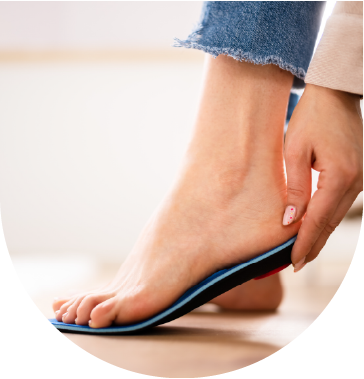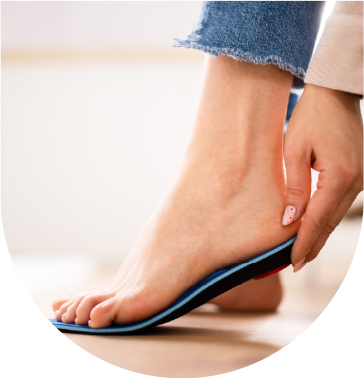Return to Play – Can We Do a Better Job? (Part 2)

Patient
ABOUT THE practitioner
Dr. Christopher Proulx
Director of Education at Baliston Health
Massachusetts, USA
D.C., Ph.D.(abd), C.S.C.S
Private practice and consultant as a physical medicine and rehabilitation specialist and performance coordinator for individuals and athletic teams.
Holds a Doctor of Chiropractic, PhD(abd) in Exercise Science, Master’s of Science in Exercise Science, and a Bachelor’s of Science in Sport Management and Health Fitness.
Over 25 years of experience in sport and clinical sciences.
Authored and co-authored several peer reviewed publications and has presented his work across the U.S., Central and South America, China, and Europe in many different venues.
Consultant to several manufacturers, clinicians, athletes, and coaches at all levels.
Licensed chiropractor, certified strength and conditioning specialist and former certified athletic trainer (15 years).
Background
While baseline testing for concussion and balance is generally recommended from age 10 onward, broader performance evaluations in even younger populations present challenges and opportunities.
Drawing from testing with under-10 youth athletes, this case raises the question: are we testing early enough, and are our tools robust enough?
Overview
This second installment in the Return to Play series focuses on improving pre- and post-injury management, particularly in youth athletes. It explores how a more nuanced, biomechanical approach—beyond standard performance metrics—can lead to more effective injury prevention and recovery.
Testing too young?
Is there any normative data in such young age groups? Vertical jump testing dates back over a 100 years in physical education.2 From a performance perspective, Taylor et al (2010) established some normative data for CMJ in youth ages 10-15 in school children. On occasion, we may simply determine that some technique instruction may improve outcomes. For example, too wide of a stance width could result in loss of take of force as well as cause dynamic knee valgus upon landing. In younger age group, Koren et al (2015) established that especially into teenage years, CMJ height is directly related to jumping technique. Populations do matter, and it may be explained by amount or physical activity and education type. Interesting to note however, these two populations seem to have different linear slopes in increases of VJ heights, where the UK group surpasses the Colombian group at age 12.3,5
Dynamic Knee Valgus
In an extensive review, Wilczynski et al (2020) describes both the consideration for the intention or reason and types of interventions to reduce dynamic valgus, a concern for acute injury and prediction of ACL disruption in particular. Often, a combination of strengthening exercises and jumping/landing technique has been employed to correct abnormal take off and landing. This is also intended to close the gap between left and right leg differences in horizontal jump performance.
Further Discussion on Symmetry Testing
A potential issue with today’s symmetry tests is that they are based on the performance aspect of distance and/or height, to evaluate strength and power symmetry. Recent evidence suggests that this approach may not be discriminate enough to evaluate asymmetry.7 This concept of the loading force and/or rate of loading force being a significant problem associated with ACL injury is over 2 decades old.8 In individual analysis, reactive strength ratios can be found to be asymmetrical when the performance measure was found to be >90% (that cut off for common return to play criteria in decision making) and in fact Lloyd et al (2020) found that less than 50% of those measured with favorable distance symmetry did not test normal on reactive strength ratio. Cone and Lee (2021) evaluated vertical ground reaction forces (vGRF) on take-off and landing of each limb during double leg tasks and found significant differences, indicating landing forces can be higher and right to left asymmetries are exacerbated during landing as well. It could be because of various factors including exacerbated eccentric capabilities, technical landing strategies, motor control, etc but detection simply based on the performance outcome is not sufficient.
What about the foot?
I think everyone is well aware of the contribution of knee extensors, hip extensors, hip abductors and motor control in landing mechanics but it is also important to evaluate the ankle contribution. Teng et al (2020) determined foot/ankle landing position influenced both knee flexion angles and ROM as well as vGRF. In a more plantar flexed position of the ankle, there is lower vGRF and great knee ROM through landing. Although they found a more reduced angle compared to flatfoot/neutral ankle, I speculate that has to do with how the subjects touched down from a drop jump. The of course there are considerations for angles as well as velocity of movement for the ankle and subsequent articulations, but we will save that discussion for another time.11
Conclusion
I realize this seems like its getting a little technical but it does not need to be overly complex in practice. Yes, much of this used to take place in a lab and reported in a research journal but now this ability and interpretation is at our figure tips at the practice level. Its becoming more common practice to institute these improvements in knowledge in the clinic and performance centers, so we can do a better job at reducing first time and reinjuries to keep people active.
References
- CDC
- Sargent, D. A. (1921). The physical test of a man. American Physical Education Review, 26(4), 188–194. https://doi.org/10.1080/23267224.1921.10650486
- Taylor MJ, Cohen D, Voss C, Sandercock GR. Vertical jumping and leg power normative data for English school children aged 10-15 years. J Sports Sci. 2010;28(8):867-872. doi:10.1080/02640411003770212
- Katja KOREN, Rado PIŠOT, Boštjan ŠIMUNIČ: VERTICAL JUMP HEIGHT IN YOUNG CHILDREN - A LONGITUDINAL STUDY. ANNALES KINESIOLOGIAE. 2016, 7(2), 153–17.
- Ramírez‐Vélez, R., Correa-Bautista, J.E., Lobelo, F., Cadore, E.L., Alonso-Martínez, A.M., & Izquierdo, M. (2017). Vertical Jump and Leg Power Normative Data for Colombian Schoolchildren Aged 9–17.9 Years: The FUPRECOL Study. Journal of Strength and Conditioning Research, 31, 990–998.
- Lloyd RS, Oliver JL, Kember LS, Myer GD, Read PJ. Individual hop analysis and reactive strength ratios provide better discrimination of ACL reconstructed limb deficits than triple hop for distance scores in athletes returning to sport. Knee. 2020;27(5):1357-1364. doi:10.1016/j.knee.2020.07.003
- Ford KR, Myer GD, Hewett TE. Valgus knee motion during landing in high school female and male basketball players. Med Sci Sports Exerc. 2003;35:1745–50.
- Cone SM, Lee S. Lower Limb Force Asymmetries During Landing and Jumping Exercises: A Pilot Study. Int J Exerc Sci. 2021;14(1):544-551.
- Teng PSP, Leong KF, Kong PW. Influence of Foot-Landing Positions at Initial Contact on Knee Flexion Angles for Single-Leg Drop Landings. Res Q Exerc Sport. 2020;91(2):316-325. doi:10.1080/02701367.2019.1669765
- Dos'Santos T, Thomas C, Comfort P, Jones PA. The Effect of Angle and Velocity on Change of Direction Biomechanics: An Angle-Velocity Trade-Off. Sports Med. 2018;48(10):2235-2253. doi:10.1007/s40279-018-0968-3


